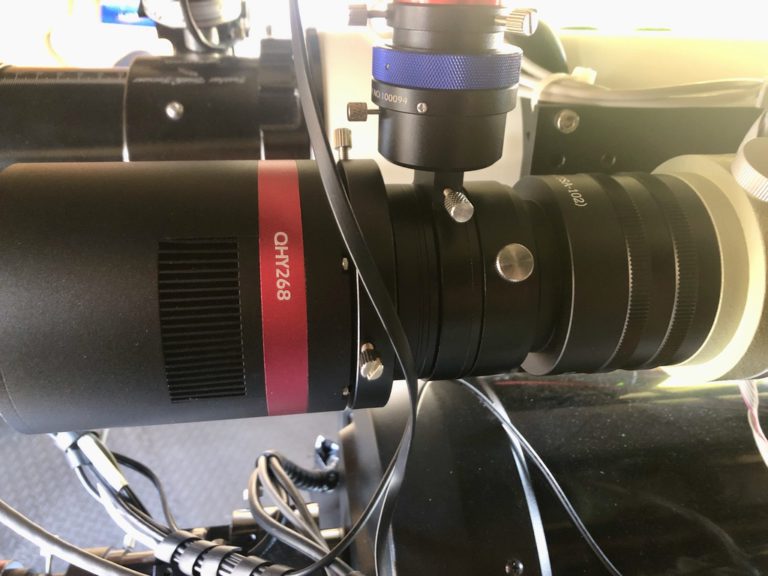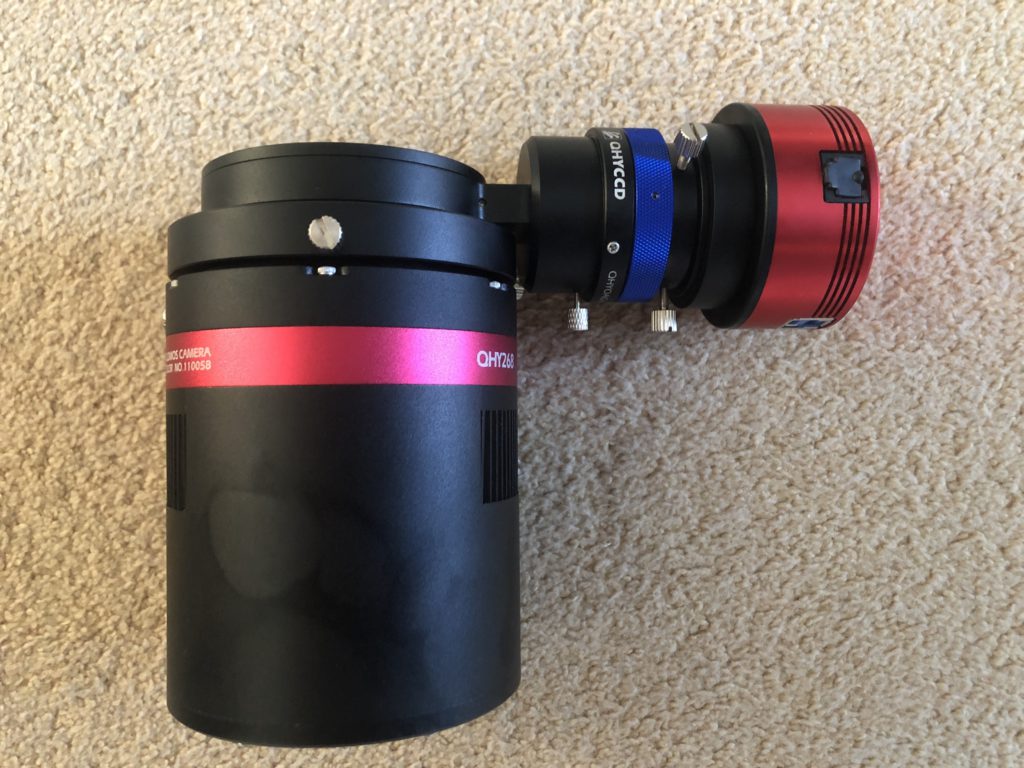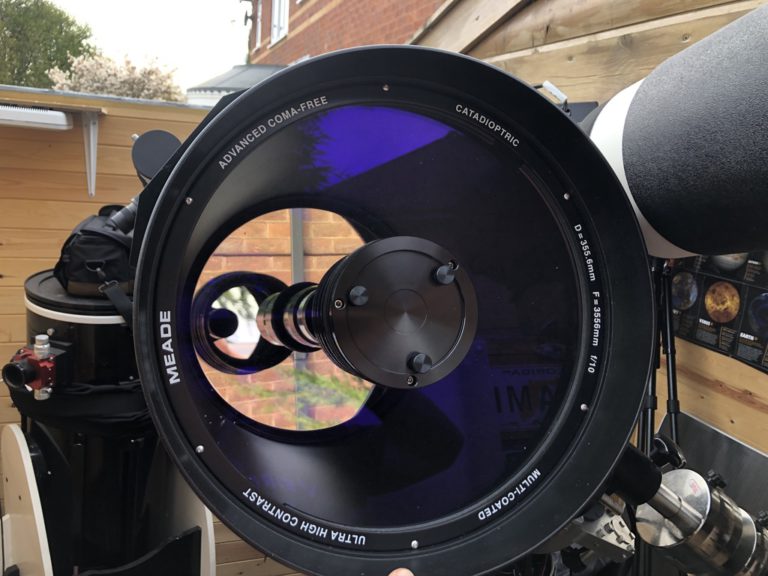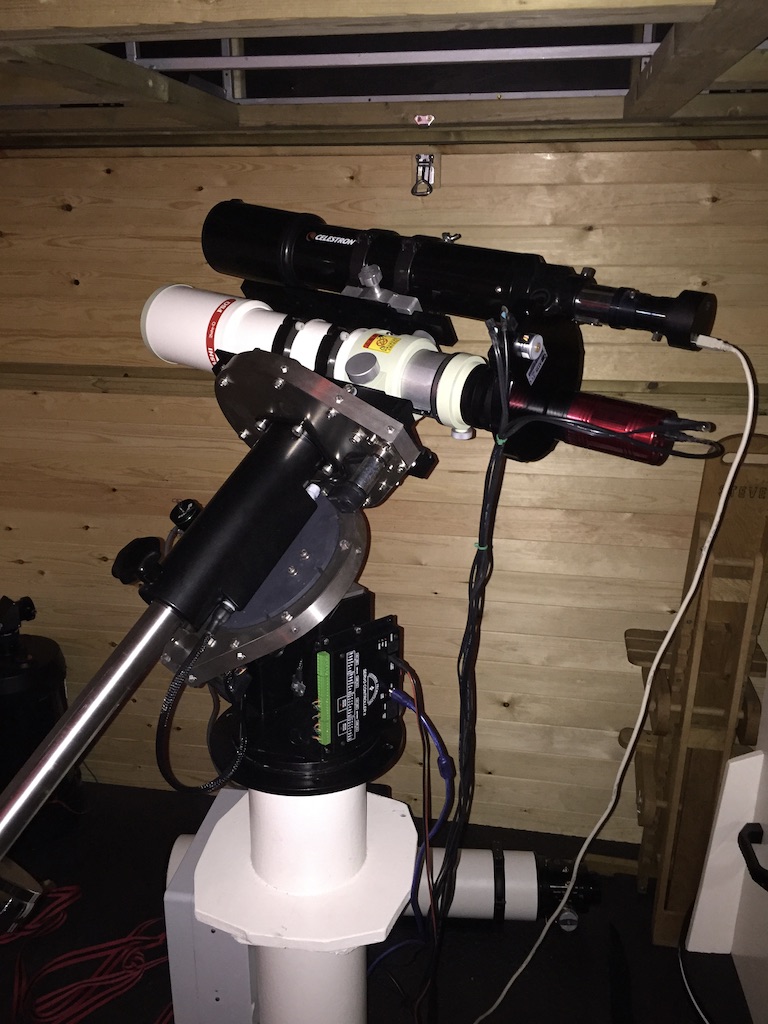Introduction I’ve bought a QHY268C colour CMOS camera and a QHYOAG-M as discussed in my post here. As I explain in that post, my intention is to connect this up to my Takahashi FSQ85 “BabyQ” and make it an extensible system so that with easy and minor changes I can also connect the camera/OAG assembly to my Williams Optics Redcat 51, Samyang 135mm lens and maybe other optical systems (although its primary use will be on the FSQ85). I also explain in that post how to configure the QHY268C and the OAG assembly such that both camera and guide camera can both reach focus simultaneously by “padding” out the camera side of the OAG with about 13mm of spacers between the OAG and the camera in order to get both cameras to simultaneously focus.I now needed to determine a way to mount the OAG-QHY268C assembly via a threaded method to…
Introduction And Rationale For Purchase QHY268C on Takahashi FSQ85. Note the totem pole of adapters to the right of the QHYOAG-M in order to get a screw fit onto the FSQ85 focuser I am already a very happy owner and user of two CCD mono cameras and associated filter wheels; an Atik 460 CCD with EFW2 and a Moravian Instruments G2-8300 CCD camera. I have been very pleased with the performance of both, I enjoy using them and will continue to do so. I have connected my Moravian CCD for use exclusively on my Samyang 135mm lens and it is semi-permanently attached to it. I have my Atik460 semi-permanently attached to my TEC140 scope. I do not want to disturb these two hardware arrangements. However, this leaves me without a camera for my excellent Takahashi FSQ85. So with this in mind I needed to acquire a third, cooled, astro-imaging camera.I…
I bought the 14″ ACF SCT Optical Tube Assembly (OTA) telescope in excellent condition in April 2019 second hand. These ACF (Advanced Coma Free) SCT scopes from Meade have an excellent flat field and my intention upon purchasing this scope was to use it for lunar and planetary visual work and also for some astrophotography. Meade 14″ ACF The SCT telescopes increase in size and weight is almost exponential with their increasing aperture. This scope is VERY heavy at almost 27kg and I had it mounted side-by-side with my [also heavy] TEC140. I needed almost 40kg of weights to balance this combination. It was very close to the MESU200’s maximum weight carrying ability and caused the mount to shiver for a few moments after any physical touch of the mounted telescopes. I originally intended a three scope combination with the Meade 14″, TEC140 and my FSQ85, the latter two attached…
In order to get the best from your observing and imaging sessions, your reflecting telescope needs to be properly collimated. In other words, the optical axis of the telescope must be optimised to reflect the light optimally. Newtonian and Ritchey- Chretien design scopes do not deliver a crisp and sharp image unless they are properly collimated. A laser collimator is a device that can aid in getting the telescope properly collimated. I want to emphasise that I am not in any way paid in money or kind to write these words. I do this for the love of it and to help others and I have no connection whatsoever to the maker of these collimators. Sadly, Howie Glatter himself passed away in 2016. He was a very kind man and was incredibly friendly, knowledgable and approachable. There was almost nothing he didn’t know regarding the subject of collimation of telescopes! …
I have had the scope for three weeks now and have used it three times. That’s good going in the UK in case you possibly thought that’s bad; it’s not uncommon to wait for six weeks for a first light in our cloudy climate! Anyway, leaving aside the usual British moans about our weather……The FSQ is so easy to use. Just point it, focus and forget. I am using Baader LRGB filters in 1.25″ guise in an Atik EFW2 filter wheel. These filters are stated to be parfocal. However, with my Skywatcher ED80 telescope I found they were not. The focus wandered slightly between the filters. I normally focus on the Luminance channel first. I then grab LRGB in that order. But by the time I got to the blue filter I found stars were becoming bloated, not massively – but enough to take the edge off the picture. This…





